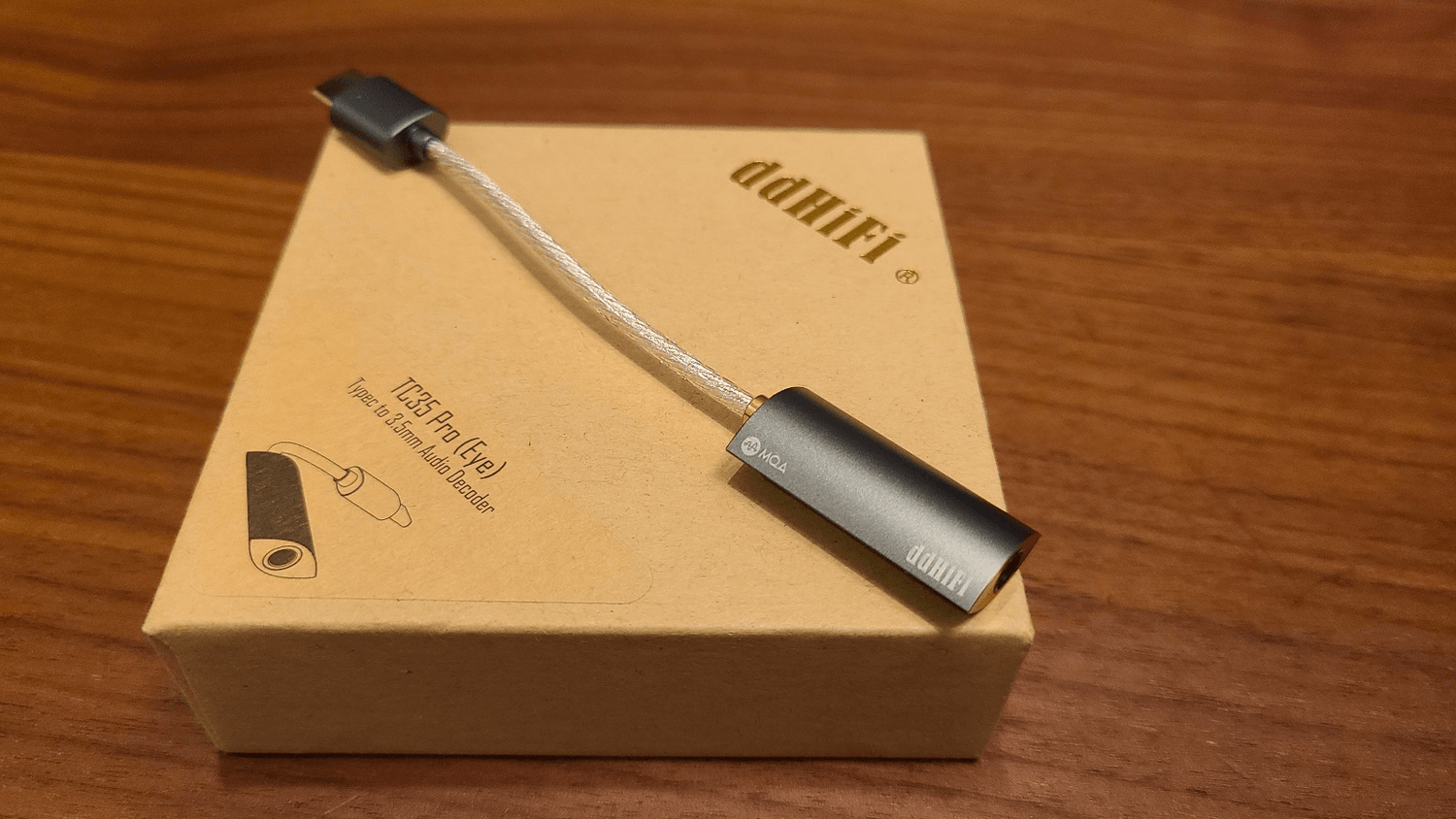Author:Andy.EF
DAC Chip: ESS Sabre ES9281C PRO (Single)
PCM 32bit – 768khz 8X MQA DSD128, SNR: -118dB, Power: 62 mW 32Ω , USB Type-C Male, 3.5mm SE (Microphone: YES), 5.8g, Aluminum Chassis, SPC Cable
Listening Equipment: Etymotic ER4SR, HZSOUND Heart Mirror, VE Monk GO, TIN HiFi P1, Moondrop Aria. Source: USB 3.2 Samsung S20 (Tidal)
LISTENING EQUIPMENT USED IMPARTED HUGE INFLUENCE TO SOUND IMPRESSIONS & RATING

PROS
- Sparkly clean and clear neutral timbre
- Crisp natural tonality with pristine coherence
- Balanced energetic dynamics, realistic vibe
- Great Treble textures and extensions with crisp decays
- Fast Mid-Bass vibe with rich textured body, equally fast decays
- Natural Mids that’s not too forward nor recessed, richly textured and smooth.
- Mild Sub-Bass with equally mild seismic feedback
- Crisp nuanced and smooth details retrieval, very transparent
- Realistic toned guitars, cello, percussions, and piano
- Reference class speed and transients handling, amazing dexterity
- Decently sized soundstage with natural feel to the spatial imaging
- Great separation of layers with precise holographic projection
- Decent driving power, 80/100 volume to drive Tin HiFi P1 to proper listening levels
- Great synergy with anything (no lower than 95db of sensitivity & over 100Ω)
- Great clean black background even on high sensitivity IEM (Moondrop Aria 122db)
- Very conservative on battery drain
CONS
- Power limited to below 100Ω 96db Sensitivity
- Less forgiving to poor quality recordings or sources
- Soundstage not as wide as the top 5 performers
- Able to drive magnetic planars, but the dynamics are lean bodied
- No hardware volume adjuster
- Slightly warm to the touch when playing maximum resolution on MQA (Purple level)
- Sporadic soft crackling sound when playing Tidal MQA. Observed on Samsung S20 (USB 3.2), Xiaomi Mi9T (USB 2.0) and Xiaomi Redmi Note 7 (USB2.0). This is persistent with all the IEMs used in this test. However not occurring on USB 3.0 of my Asus i7 Laptop.

VERDICT
ddHiFi TC35 Pro (Eye). This is my 7th dongle that runs on ES9281C DAC chips family. So, I am very familiar with the characteristics of this range of DAC/Amp in dongle format. What separate them from each other would the designation of Pro or non-Pro. There are mild differences as the Pro will be more polished while remaining crisper sounding. Specifically, TC35 Pro comes with the ES9281C PRO model. And I can attest that it is exactly as how I expect it to sound like. Pristine clear and clean with energetic dynamics, neutral timbre with slight emphasis on treble sparkle that’s not overly done. Honestly if a blind test were to be done between this TC35 Pro, hiliDAC Audirect BEAM 2SE, hiliDAC Audirect ATOM2 and HiBy FC3, I could probably end up in mental asylum from prolonged critical listening sessions, with a few brain cells burnt out trying to pick up differences between them. However, what I can discern is that TC35 Pro does offer polished edge with matured tuning. Coherence is nothing less of being stellar and the timbre remained faithfully neutral as how I heard it from HZSOUND Heart Mirror, TIN HiFi P1, VE Monk GO, Etymotic ER4SR and Moondrop Aria (Aria sounds a bit warmer due to the nature of it natively).
You would notice that I opted not to pair this TC35 Pro with my Shure KSE1500. The same approach I did for the other ES9281C based DAC chips. The reason is simple. KSE1500 is already mightily resolving and transparent. Feeding a bright source like this will be prone to introducing treble sheen and glare that can be fatiguing. As a matter of saying, it will not pair well with Electrostatics.
Now, this is the part that I hated to most, but I will say it as how I experienced it. TC35 Pro suffers from the same symptoms observed in Questyle M12, hiliDAC Audirect 2SE & Audirect ATOM2 when playing full MQA on Tidal (all of those dongles use the same ES9281C chips) . While the performance is stellar on the traditional FLAC up to 48/32, Tidal MQA playback is troubled with sporadic soft crackling background noise. I am not sure if this is unique to Tidal, but then Tidal MQA runs perfectly fine with HiBy FC3 and Hidizs S3 Pro (same chips as well). Perhaps later when I have the time, I will conduct further tests on other MQA source but the results on this subject was underwhelming for me. It’s worth to note that I have tested all these with four different mobile phones including the newer Samsung Galaxy S20 5G (USB 3.3 with 3.0 Power), Xiaomi Mi9T (USB 2.0), Xiaomi Redmi Note 7 (USB 2.0) and LG V35 ThinQ (USB 2.0). The results were consistent. To be fair the soft background crackling was not evident when I plug them to my Asus TUF DASH 15 laptop that runs on USB 3.0. I sincerely hope there will be a solution to this either on the Dongle manufacturer side or Tidal. Because to many including myself, that background noise is a huge deal breaker for MQA experience.
OVERALL RATING: 90/100
Best Pairing: Natively warm IEMs/Headphones not exceeding 100Ω




Leave a comment
All comments are moderated before being published.
This site is protected by hCaptcha and the hCaptcha Privacy Policy and Terms of Service apply.